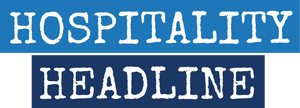Communities are becoming invaluable assets for organizations. When shared by members it can grow quickly with little additional cost or effort. Building and nurturing a strong community around your brand can lead to increased customer loyalty, deeper engagement, and sustainable growth. Here’s how you can harness the power of communities to drive your business forward.
Understanding the Value of Communities
A business community isn’t just a group of people with similar interests; it’s an ecosystem that fosters relationships, encourages feedback, and builds trust. The interaction within these communities can range from sharing insights and experiences to offering support and solutions. The key to a successful community is creating a space where members feel valued and heard, leading to organic advocacy and brand loyalty.
Building a Community: Where to Start
- Identify Your Audience: Before you start building a community, it's crucial to understand who your target audience is. Are they your current customers, potential leads, or industry experts? Knowing your audience helps tailor your approach and create relevant content that resonates with them.
- Choose the Right Platform: Depending on your audience, select the appropriate platform for your community. LinkedIn, for instance, has traditionally been a strong platform for B2B engagement. However, LinkedIn’s algorithm changes have shifted the platform’s effectiveness. Consider alternatives like Slack or Discord for more intimate, focused groups or even platforms like Reddit or Medium for niche communities that focus on knowledge expert publishing.
- Create Value-Driven Content: The content you share within your community should offer real value. Whether it’s educational, insightful, or simply engaging, content is the backbone of your community’s interaction. For example, sharing industry tips or case studies can spark discussions and provide practical takeaways for members.
- Facilitate Meaningful Interactions: Communities thrive on engagement. Encourage your members to interact by asking questions, sharing their experiences, and providing feedback. Regular meetups, either virtual or in-person, can help solidify these relationships and keep the community active.
- Mastermind Group: These groups large or small bring together professionals and can be based on expertise, experience levels, backgrounds and interests. Whether in person or virtual, participants get to know each other and the group not only shares but can also support each other through insights, references, feedback and introductions.
Leveraging Communities for Business Growth
- Turn Customers into Advocates: When your community members feel supported and valued, they naturally become advocates for your brand. These advocates can help spread the word about your products or services, bringing in new members and potential customers.
- Gather Valuable Feedback: Your community is a goldmine of insights. Use it to gather feedback on your products, services, marketing strategies, and needs and challenges in the industry. This feedback can help you make informed decisions and improve your offerings.
- Increase Engagement Through Personalized Content: LinkedIn algorithms and tools are evolving. Their algorithms now favor video content and newsletters. Consider diversifying your content strategy to include these formats, which can lead to higher engagement rates within your community and an easier way to share and promote your community on platforms like LinkedIn.
- Monitor and Adapt: The dynamics of a community can change over time. Regularly monitor interactions and feedback to ensure your community remains vibrant and relevant. If certain strategies or content types aren’t resonating, be flexible and ready to adapt.
Value Summary
Building a strong, engaged community around your business is not just a trend; it’s a strategic move that can yield long-term benefits. By focusing on providing value, facilitating meaningful interactions, and leveraging the right tools, you can create a community that not only supports your business goals but also becomes a key driver of your growth and success.

